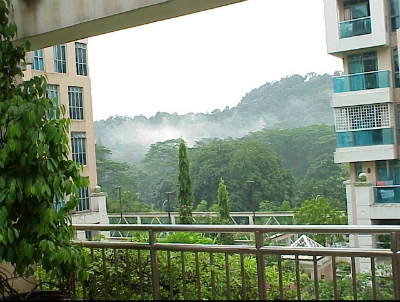Case 1
- Introduction
- Causes of Defects
- Good Practices
- Standards
- Maintenance and Diagnostics
- Remedial
- Similar Cases
- References
Cause of Defects

- The design and layout of the block around a vegetated patch enhances an up draft of wind when the wind’s path is blocked.
- The result is a stairwell effect where the wind is driven up the height of the block.
- This causes the spores and dirt of the vegetation patch to be carried upwards and allows deposition on the wall surface.
- A high humidity and rainfall volume together with the presence of dirt and organic spores, organic growth results on the walls.
- Water will adhere to the wall like a thin film and spores and dirt would be trapped within this film. Algae growth thrives on such conditions.
Algae Growth
Algae growth has been characterised by two (a) factors attributed to the environment (b) factors attributed to the building envelope. Environmental factors consist of climate, thermal amplitude, precipitation, hygrometry (humidity), distance from the sea and presence/absence of vegetation. Precipitation and hygrometry directly affect the availability of water on to building facades, which is widely known as one of the key requirements for algae growth. In Singapore, the high humidity and precipitation result in buildings experiencing high amounts of water contact throughout the year. The closeness of the building to the sea can also result in higher atmospheric humidity, leading to a greater chance of algae growth. Building related factors affecting algae growth are high alkalinity (e.g. fresh concrete, high in alkaline helps algae to grow), excess surface moisture, windborne transport (orientation), and rain streaks that carry the algae spores down a façade.
Left unchecked, algae will grow on surfaces to create an aesthetically subjective discolouration with various shades of green, orange, black or blue. Besides being aesthetically unpleasant, biological growth on facades may also cause deterioration and further weathering to the wall.